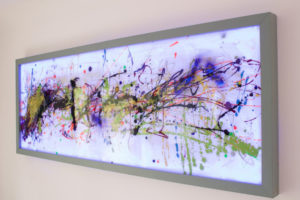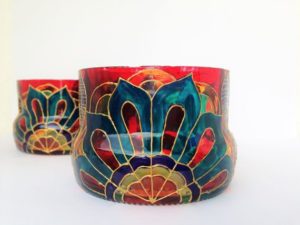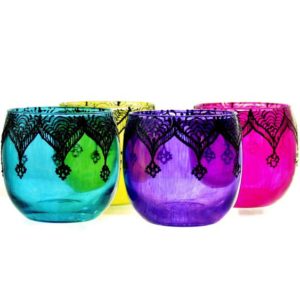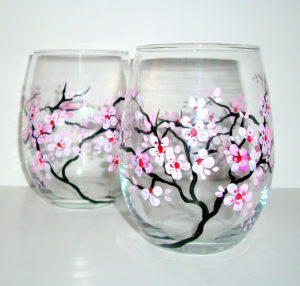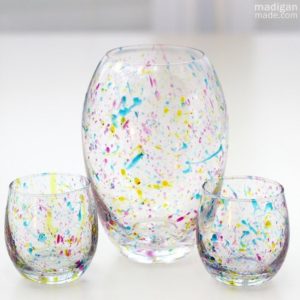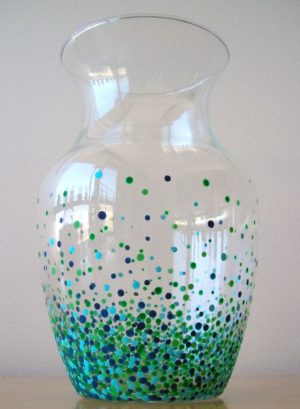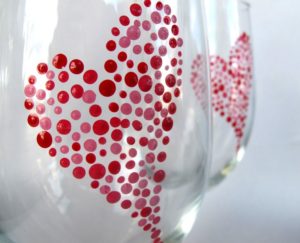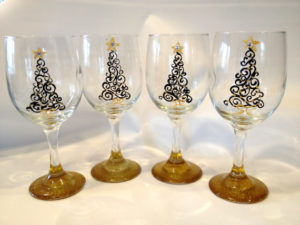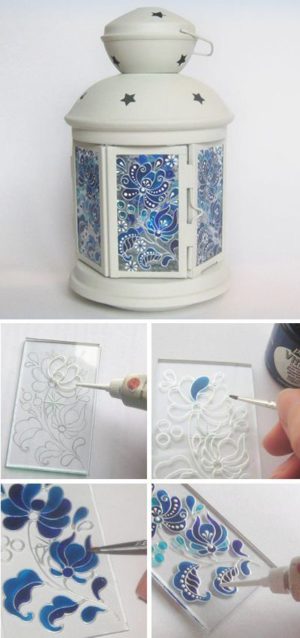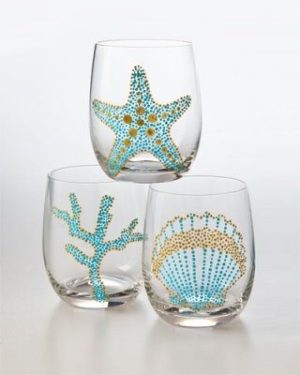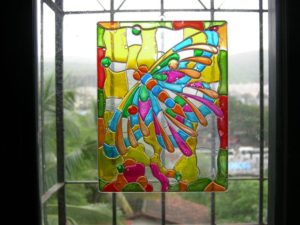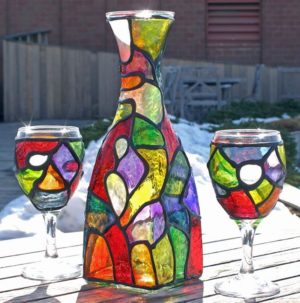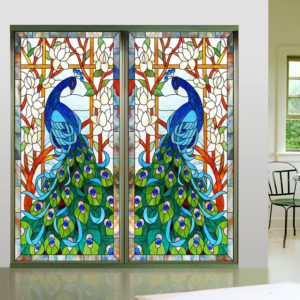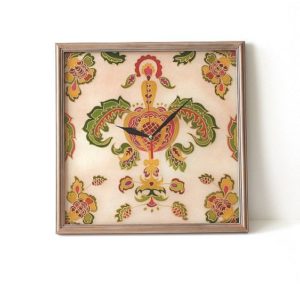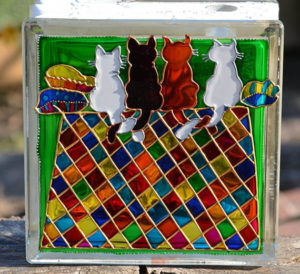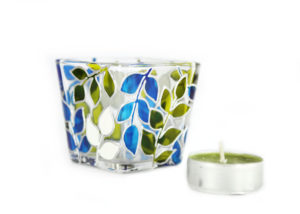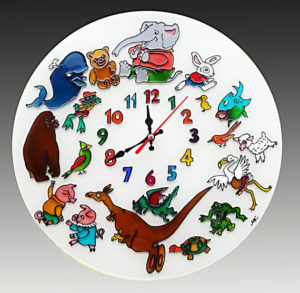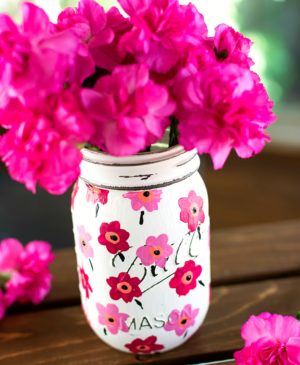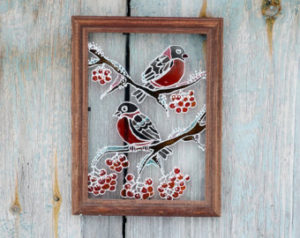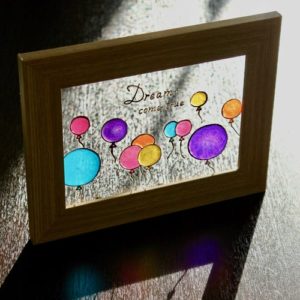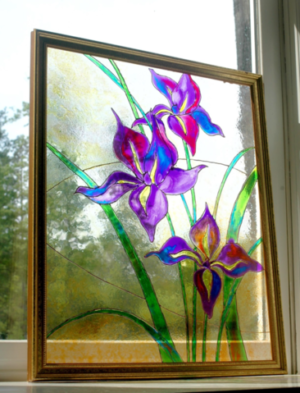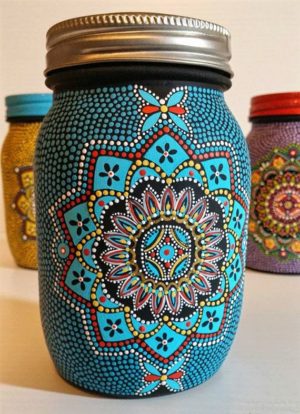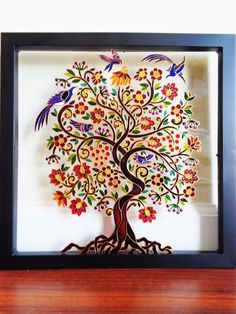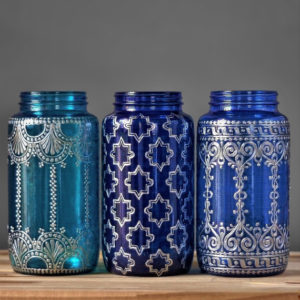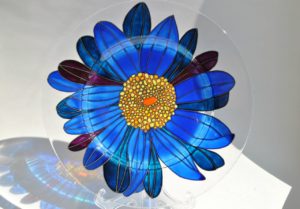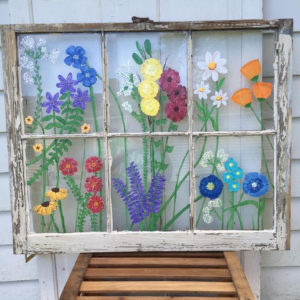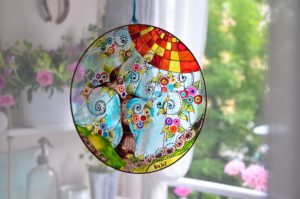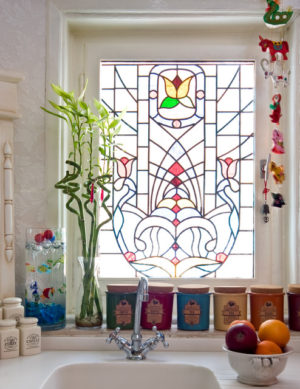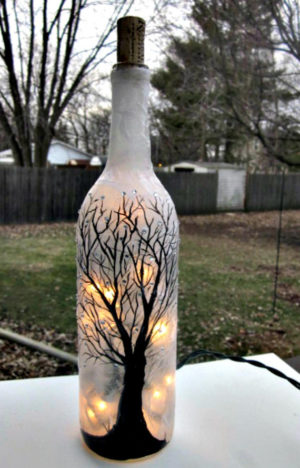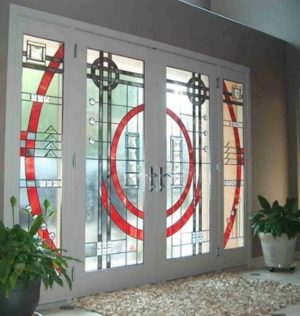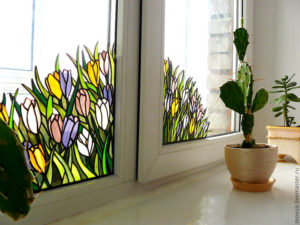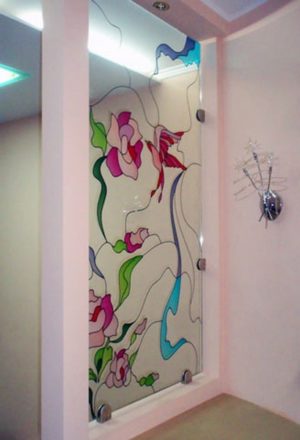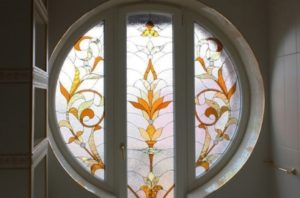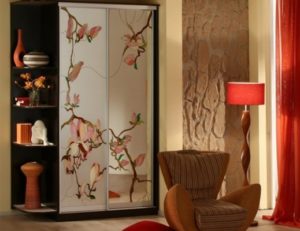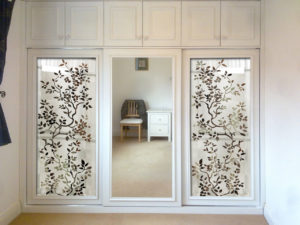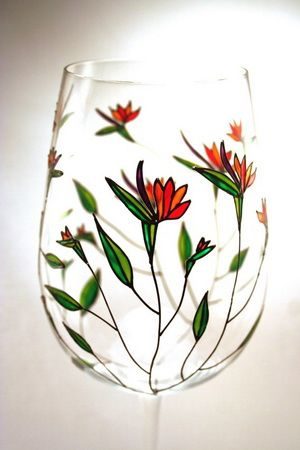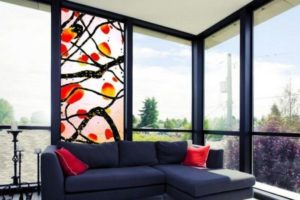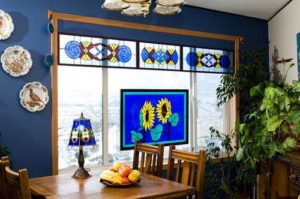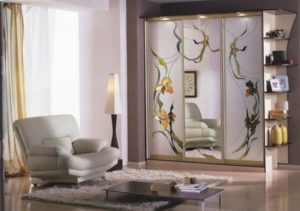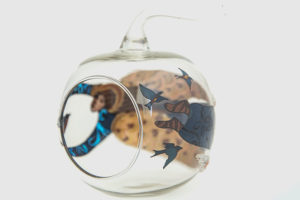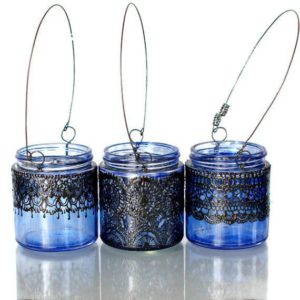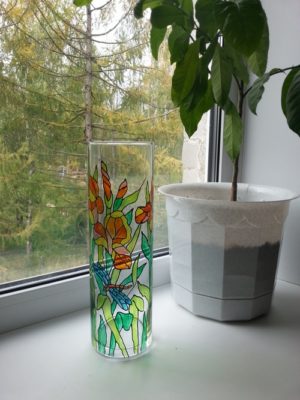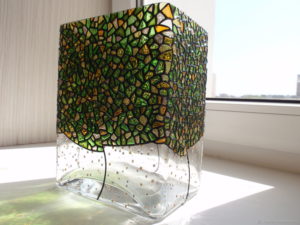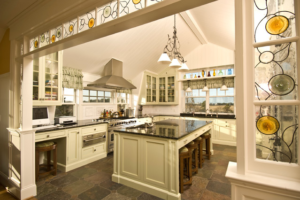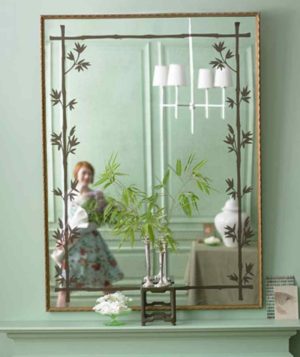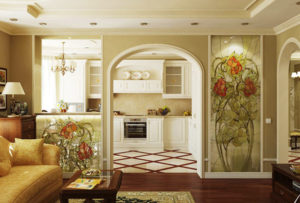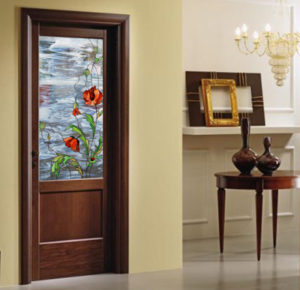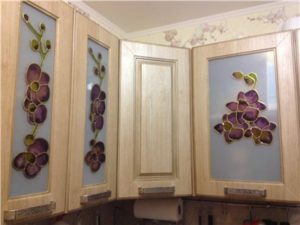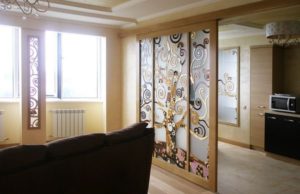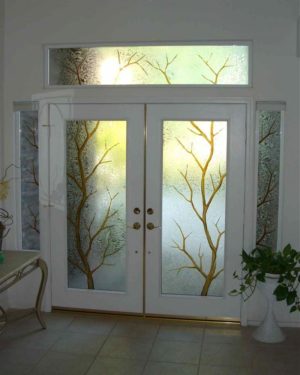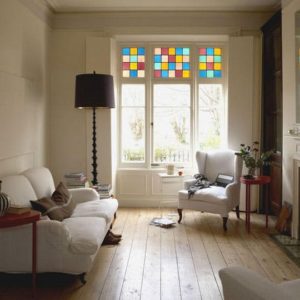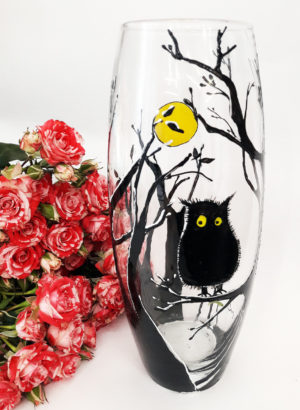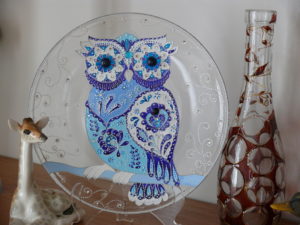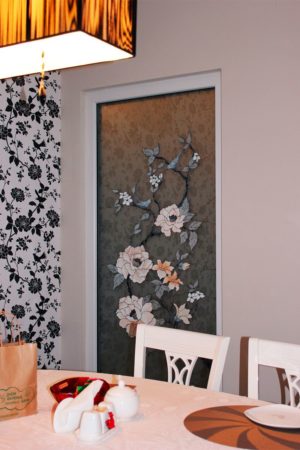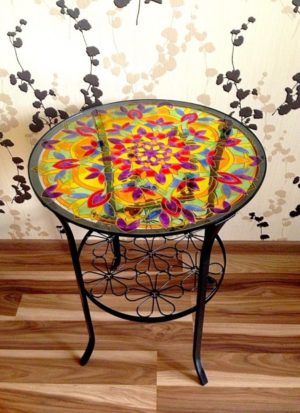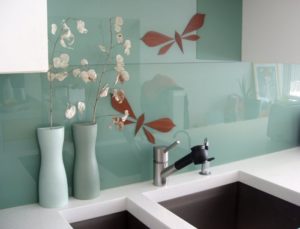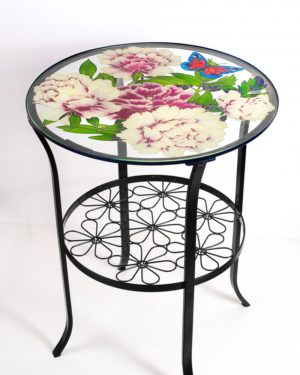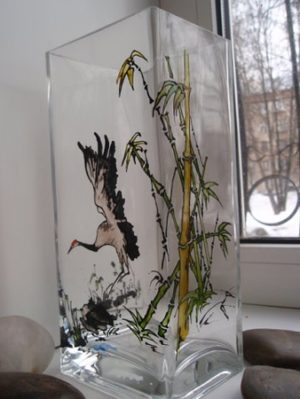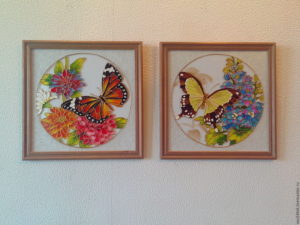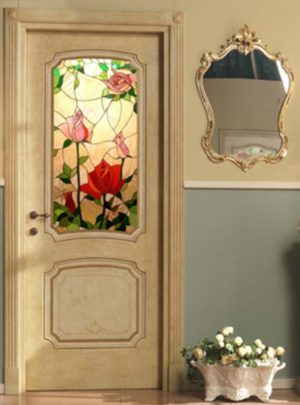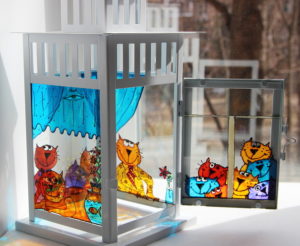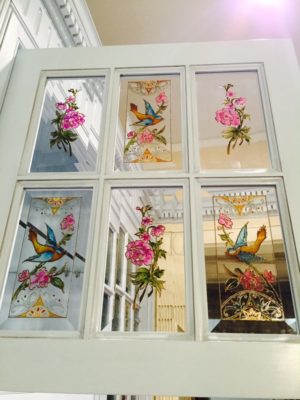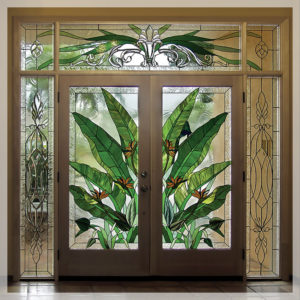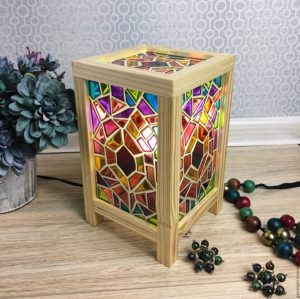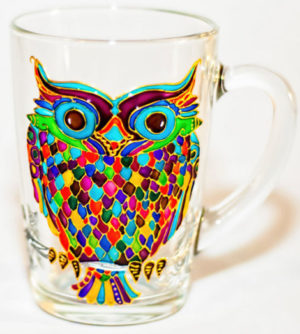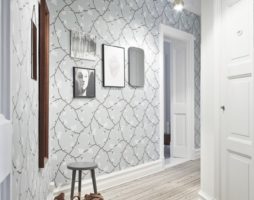Glass as an element of interior decor? This boring, nondescript, unremarkable, except for transparency, surface? Why not? Naturally, not in its original form, but after some refinement, but it is quite capable of becoming a magnificent decoration of a stylish composition.
What is needed for that? Just draw on glass. And here it is not at all necessary to have the talent of an artist. The issue of its design can be solved in a variety of ways. Here's how to do the painting on glass with your own hands and we will get acquainted below.
What can be the painting of glass?
There are several ways to decorate a glass surface:
1. Paint according to your fantasies.
2. Associate with stained glass.
3. Decorate using stencils.

Glass surface decor
Stained glass painting
Stained glass is an impressive sight, but, unfortunately, it is extremely rare in interiors today. The reason for this is its high cost and the specificity of the decor. A true stained-glass window will adorn not every environment. The element that came to us from palace and church designs managed to remain faithful to classicism. In order to prevent the unique design solution from becoming a complete rarity, the designers took up paint and imitated the technology by developing stained glass painting.
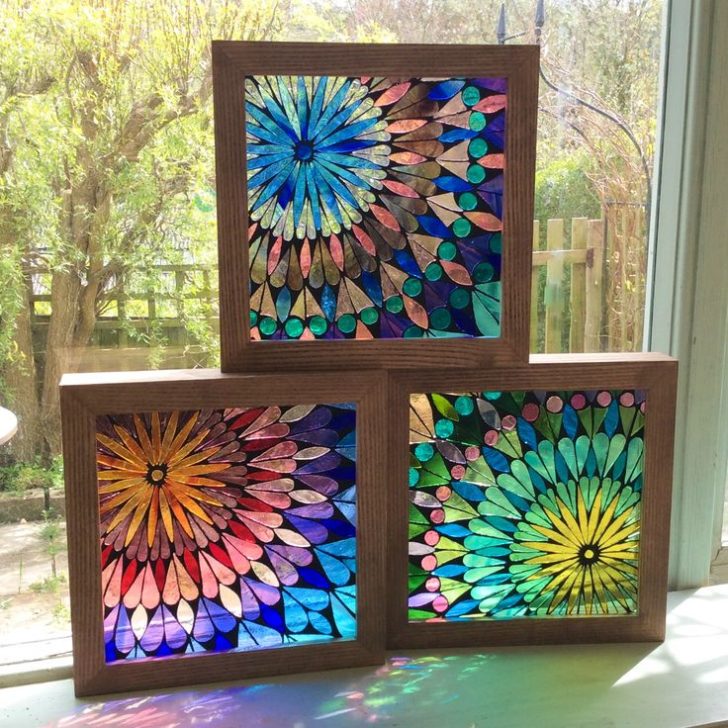
Stained glass painting
Now a stained-glass window is often called not a canvas assembled from a multi-colored glass mosaic, but an ordinary window glass painted with stained glass paints. The latter is much cheaper to manufacture, although visually it is practically indistinguishable from a real stained glass window. It is used in the design of rooms in the Mediterranean style, Art Nouveau, Provence.
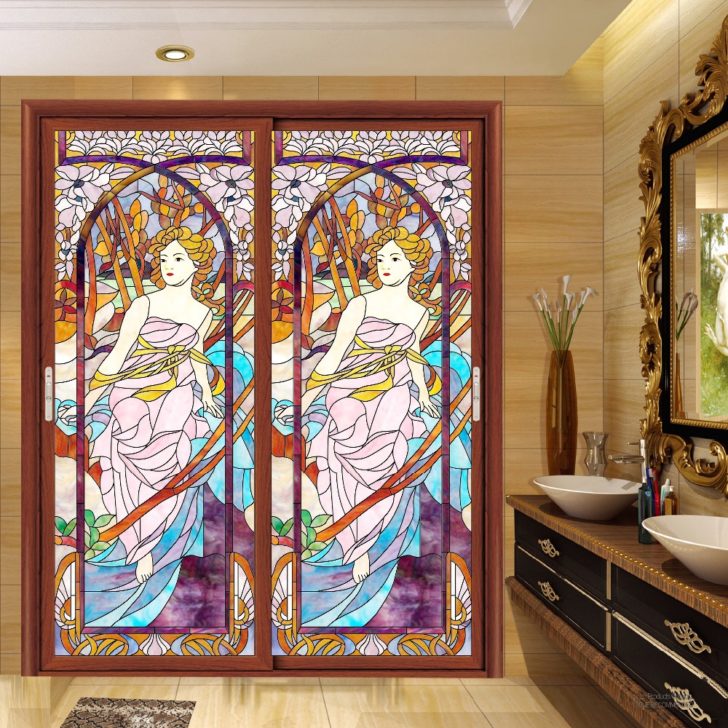
Visually, the painting almost does not differ from a real stained glass window.
Stencil drawing on glass
This technique is very helpful for those who are not given to draw beautifully. Stencils for painting on glass will help to decorate the surface evenly and accurately. Interesting stamping patterns are offered in stores specializing in goods for creativity and decor. It is quite possible to make simple blanks on your own. Ideas for pictures for painting on glass can be searched on the Internet.

Stencil for painting on glass
Stencils are:
- single use;
- reusable.
The former are made of paper or cardboard, the latter are made of self-adhesive polymer film. How to use stencils for painting on glass, consider below.
back to index ↑Freehand drawings on glass
"The pattern on the glass can be applied for a long time or for a short period"
Do-it-yourself glass painting is a great opportunity to make the interior unique.You can paint the glass surface as you like, the main thing is that the picture and color scheme correspond to the general interior mood of the room.

Drawing on glass will make the interior unique
Drawing on glass can be applied for a long time or for a short period. In the latter case, they paint with easily washable paints and do not resort to protective fixation of the image. This is often done on the eve of any celebrations. For example, it is customary to paint windows and door glass on the eve of the New Year holidays. Beautiful pictures chosen for painting on glass will help create the appropriate atmosphere in the room.

Temporary Christmas painting on glass
What is the painting on glass and ceramics?
“Nitro-oil paints are considered the most relevant and designed for a long service life;
There are factory and home-made paints for glass painting. Homemade compositions are known 4. The simplest and most unstable is prepared from aniline and PVA. Aniline can be mixed with gelatin. The effect will not be much better, since the stained glass paint will quickly burn out in direct sun, but if you need to get the perfect quality meniscus, it is not equal.

Paint for painting on glass
The legacy Soviet-rare recipe includes BF-2 glue and ballpoint pen paste. The most relevant and designed for a long service life are considered nitro-oil paints, which fit perfectly, perfectly adhere to the pattern on glass and have practically no flaws.
Cooking PVA-aniline
To prepare PVA-aniline paint for painting on glass and ceramics, you will need to prepare the ingredients: dilute 100 ml of the adhesive base with distilled water twice and dissolve the aniline dye powder according to the instructions. The resulting coloring solution is filtered through a thin nylon. Now it's time to play with shades. Aniline is added to the adhesive emulsion in drops. Color saturation is checked on glass. Pigment will have to be added to undertinted stained glass paint, and glue emulsion to saturated stained glass.

Do-it-yourself paints on glass
Preparing the gelatin-aniline mixture
200 ml of distillate is heated to 50 ° C, after which 6 g of ordinary gelatin is diluted in it. The aniline mixture is prepared according to the method described above. The dye is also added to the cooled gelatin in drops under regular control of the level of dye saturation with it. Stained glass painting on glass, made with such a composition, can be increased wear resistance.
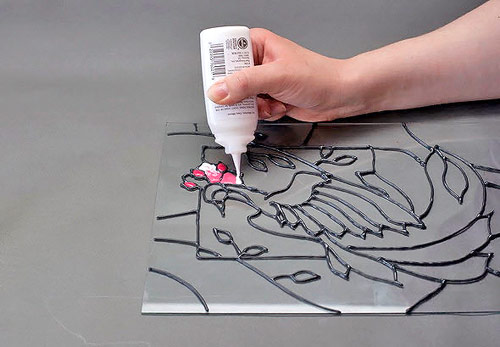
Gelatin-aniline paint has increased wear resistance
After drying, the drawing on the glass is enough to cover with a colorless acrylic varnish. Do not try to repeat this with PVA-aniline stained glass paints. They are not designed for such delights and simply float.
Preparing a Soviet recipe
The required amount of BF-2 is dissolved in a double volume of acetone. A core paste is added dropwise to the resulting solution. The mixture must be thoroughly mixed. Whether the desired shade is obtained is also checked using glass.

Paint with core paste
Preparing the nitro oil composition
The proportion of this mixture is 60x40, where 60% of the volume will be occupied by a transparent furniture nitrolac, and 40% will remain with 647 solvent. You need to give color to the composition with artistic oil paints. Since this is a pasty composition, it is dosed, focusing on the size of a pea. After kneading well, the combination is checked for matching shade.

Nitro-oil composition can be varnished
Painting on glass with stained glass paints of this type can also be covered with a layer of varnish. This will make the product even more aesthetic.
Finished paints on glass can be:
- universal;
- water based;
- glossy;
- acrylic;
- stained glass.
Universal
These are paints for glass and ceramics. They can also paint faience and polystyrene, plexiglass and all kinds of plastic. The compositions fit perfectly. Drawings on glass retain the contrast of shades for a long time and are not washed off with water. Not suitable for painting food utensils.
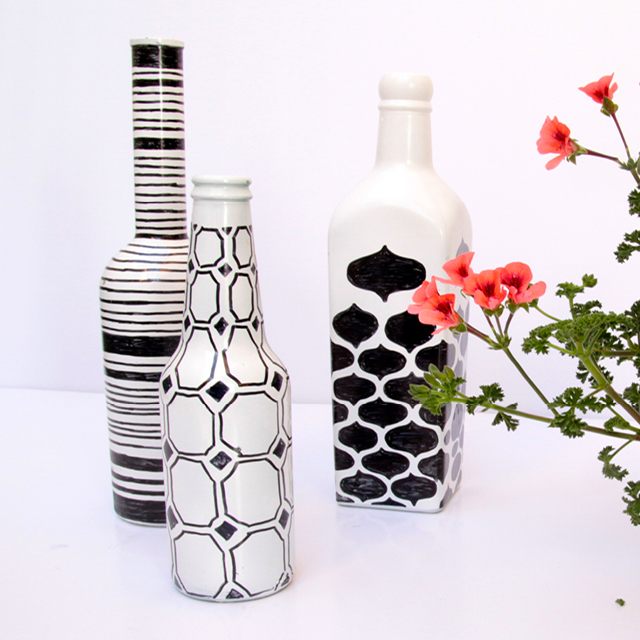
Universal paints are not washed off with water
Water based
Most often, such paints are needed for painting glass in a humid microclimate. For their fixation on the surface, firing is required. After such processing, the paints of the picture on the glass are not afraid of even repeated mechanical washing in the dishwasher. In addition to everything, they are completely non-toxic, therefore they are allowed in the painting of household utensils.
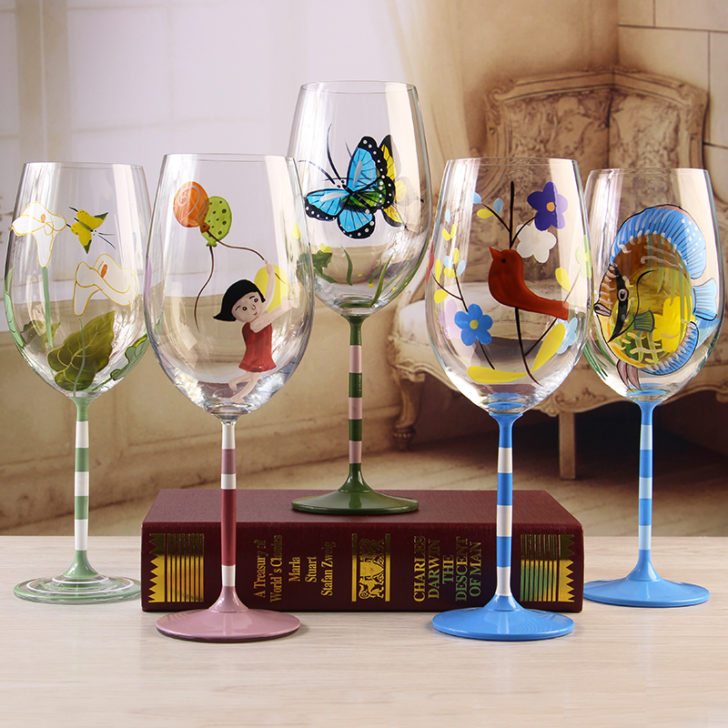
Water-based paints are suitable for painting dishes
Glossy
Paints can be mixed with each other. The pictures drawn by them differ in brightness, depth of shades, pleasant shine. Applied in two layers. Each requires at least two days to dry. Glass painting will need varnish protection.
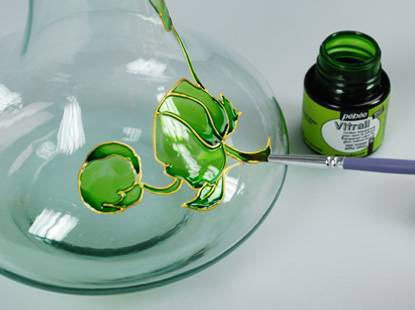
Glossy paints are bright
Acrylic
Quick-drying paints with good adhesion, used both to create ordinary drawings and in stained glass painting. Extremely resistant. Do not fade or fade. The drawings made by them are matte. They belong to the category of universal ones, since paints can be used to paint both glass and ceramics.
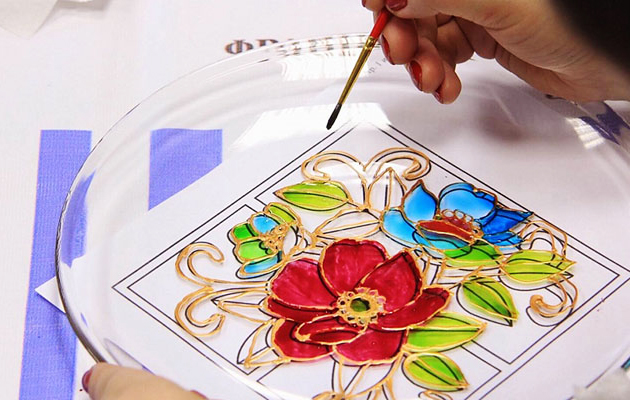
Acrylic paints do not fade or fade
stained glass
This type of paint is divided into fired and non-fired.
fired
After application, the drawing on the glass must be fired in the oven. This is not always acceptable for large panels, for example. What to do in this case? Just leave the painting to dry on its own, putting it in a secluded corner. In a week you will receive a complete product. How such a painting on glass will look like, look at the photo. The main thing here is not to let the outlines of the picture blur, and not to blur the lines, because unburnt paints will be vulnerable for a long time.
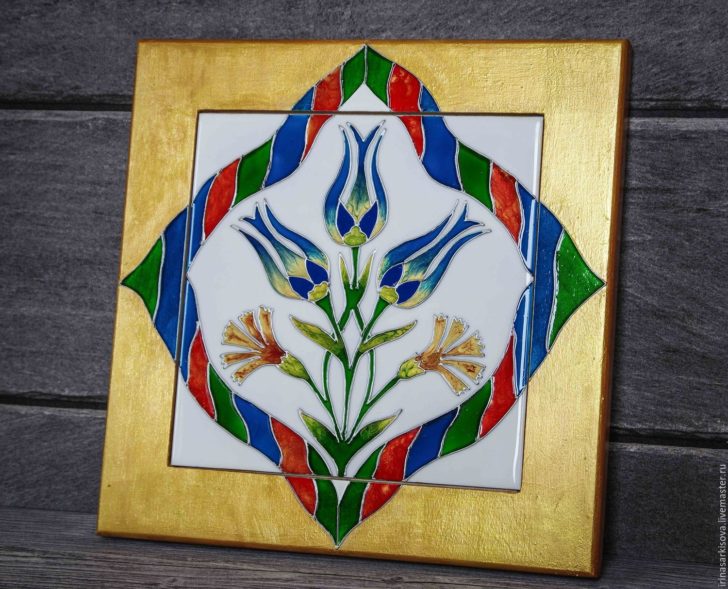
Stained glass paints with firing
Unfired
These stained glass paints are distinguished by their brightness, but the application technique is more complex. The selected pictures for painting on glass are drawn in stages. First, the contour of the future masterpiece is drawn, and only then the free spaces are filled. It is also a long-lasting, in terms of drying, type of stained glass paint, and each variation will have individual terms for this. Painting on glass and ceramics is protected by a layer of varnish. The durability of paints varies, but no matter what the pattern is, it will not be possible to soak it, and even more so to subject it to mechanical cleaning.

Drawing on glass with stained glass paints
If you look at the examples of painting on glass in the photo, you can see that in addition to color spots, there are a lot of thin lines on them. To obtain them in glass painting, markers and contours are used.
Markers
Helps in drawing fine lines. The water base allows them not to spread on glossy surfaces. After drawing a picture on the glass, the product is sent for firing.
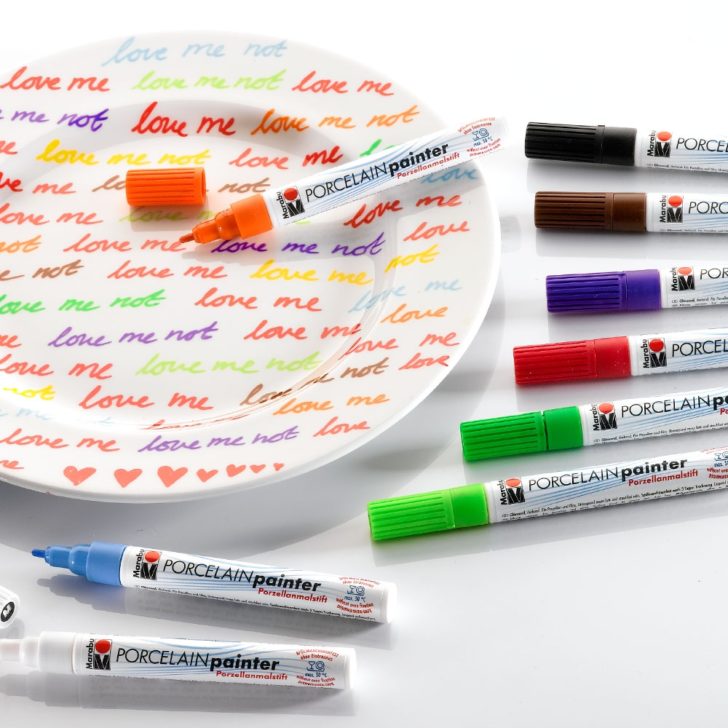
Glass markers
contours
Contours-reliefs have the appearance of applicators with a narrow tip, which is very convenient for applying thin, even lines.
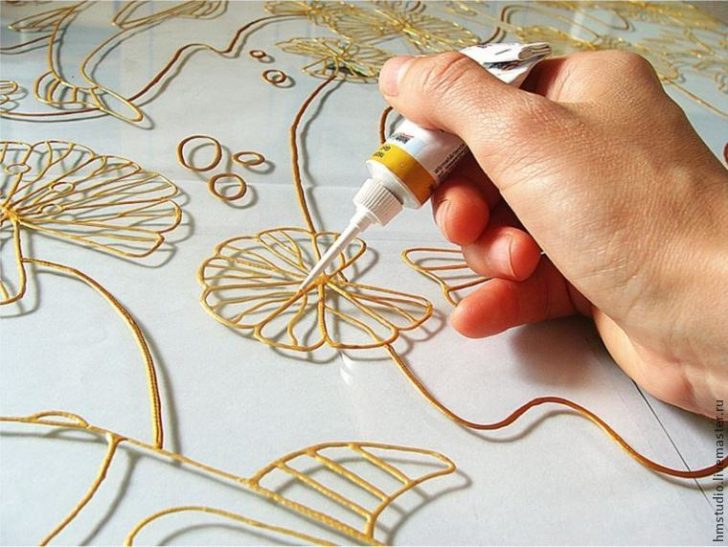
Contours are very useful for drawing fine lines.
What can be painted on glass?
Drawing on glass is relevant wherever there is a suitable area for its application. A beautiful addition to a painted glass door insert will be a similarly designed lampshade for a wall sconce, floor lamp or ceiling lamp. You can decorate the interior with stained glass paintings. The painting on glass looks good in niches, on partitions. Stained glass inserts often adorn the ceilings.
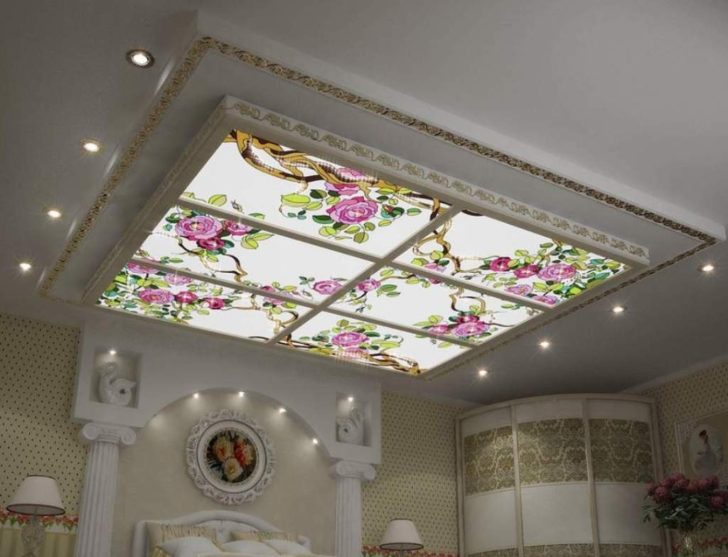
Ceiling decor with stained glass inserts
Glass painted for stained glass can become an element of decor for stairs in duplex apartments; it is inserted between wooden or stainless steel balusters.Painting on glass with stained glass paints will decorate the kitchen, shower, wardrobe doors.
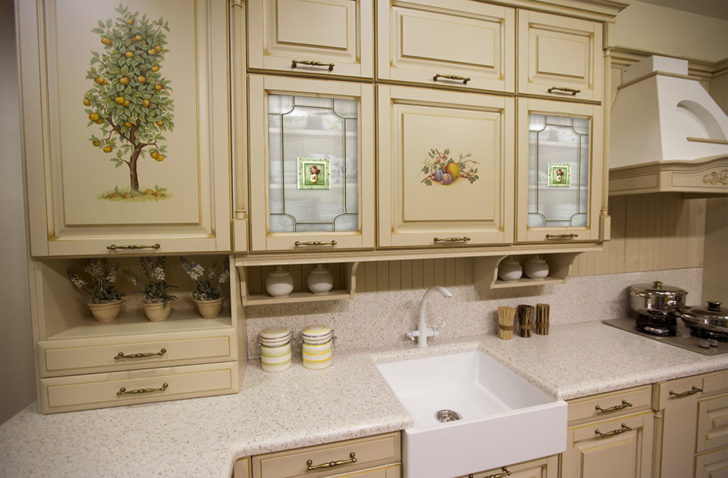
Drawing on glass in the interior of the kitchen
DIY glass painting
Let's start with the use of stencils in painting on glass. Many of the simplest models are quite capable of being made at home. To do this, it is not even necessary to draw something: it is enough to find a suitable picture for painting on glass in a photo on the Internet and print it out. A clerical knife will help cut the details exactly. If you have to paint the glass of several windows or doors, then it is better, of course, to buy a reusable template.
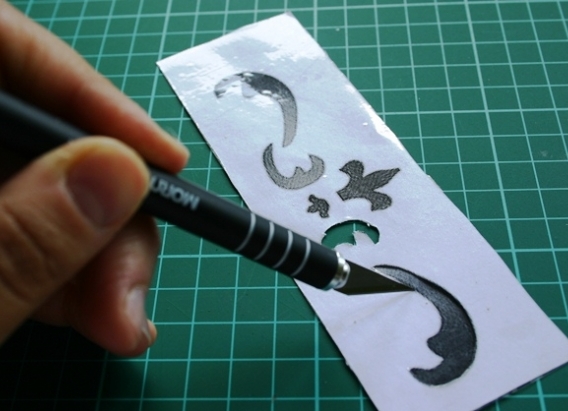
Cut out the details of the stencil will help stationery knife
How to use a stencil
For painting glass in this technique, you will need stained glass paints or acrylics. Depending on the type of pattern being reproduced, you can work with a brush or a sponge. Choosing a picture for painting on glass is a purely personal matter. What you need for work:
- the glass product itself;
- degreasing liquid;
- glass paint;
- brushes;
- Scotch;
- stencil.
Stage I Degrease the surface. Doing this is a must. The glass must be free from stains and dirt so that paint can be applied evenly on it. You can prepare the surface by treating it with a cotton pad moistened with alcohol.
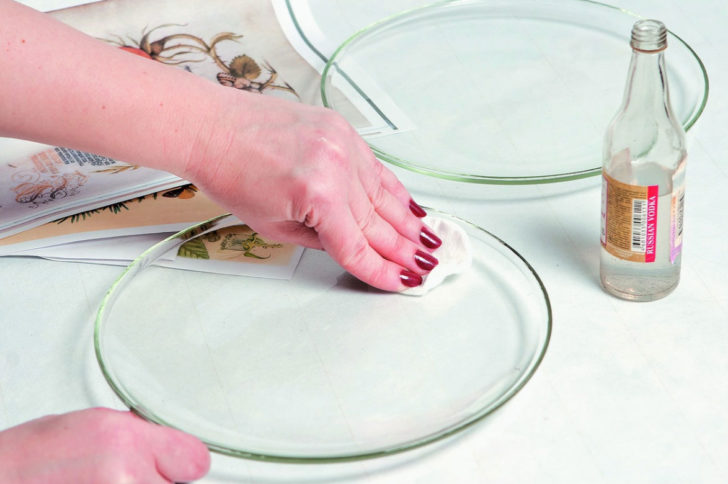
Surface degreasing
Stage II. We apply a stencil to the glass and, if necessary, fix it with adhesive tape. Fixing will make it motionless, which will eliminate errors in the work.
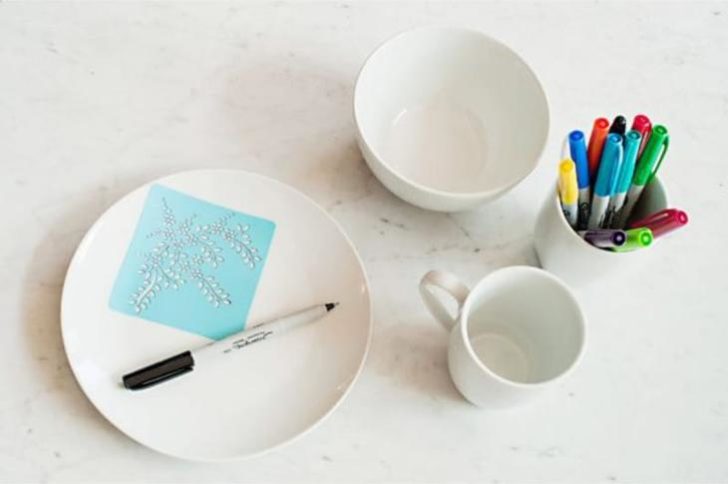
Stencil fixation
Stage III. We start painting on glass with stained glass paints. Foam rubber or a cotton swab is dipped into the paint and distributed over the stencil voids with blotting movements.
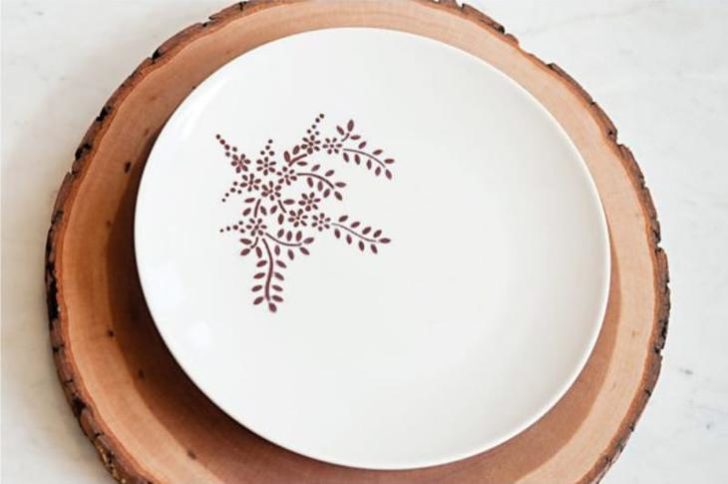
Finished painting
Dot painting technique
To work, you need contour paints. Ideally, not a full-color, but an outline drawing on the glass is reproduced. Points of identical size and at a uniform distance from each other are placed along the outline lines. Large elements of the selected image are drawn first, and then small details. The size of the dot is regulated by the force of pressing the tube.
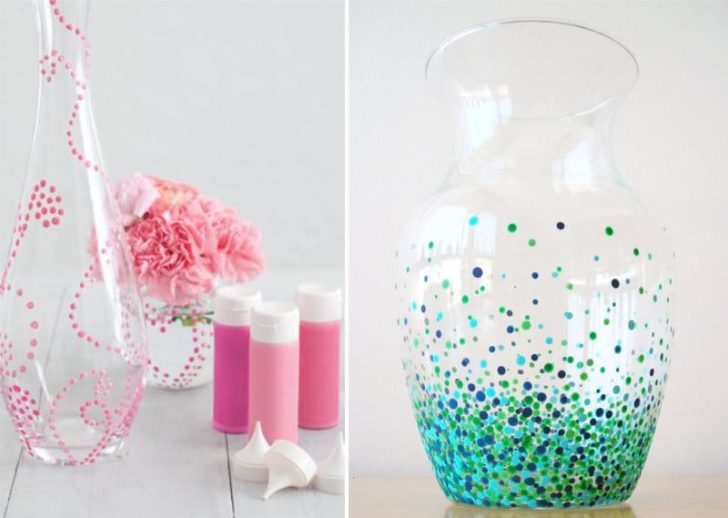
Bitmap on glass
Contour technique
A method that allows you to get the most expressive and colorful drawings on glass. For detailed drawing, thin brushes or contour paints are used.
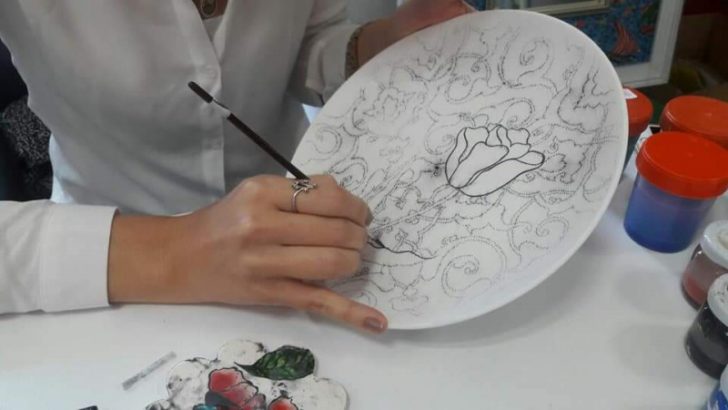
Contour painting technique
After the workpiece dries, it will be possible to start painting the intra-contour voids. The work will require precision. Paints should not spread and go beyond the already outlined boundaries. How to properly perform this stage of painting on glass will demonstrate the photo.
Stained glass painting technique
A job that requires some skill. Stained glass paints are liquid and tend to spread. In order for the idea to succeed, one must first mark the contours of abstraction by covering the surface of the glass with a network of golden, black or silver lines. You need to draw them diligently, avoiding gaps and line breaks. Remember that the contours will later play the role of barriers that do not allow colored paints to spread.
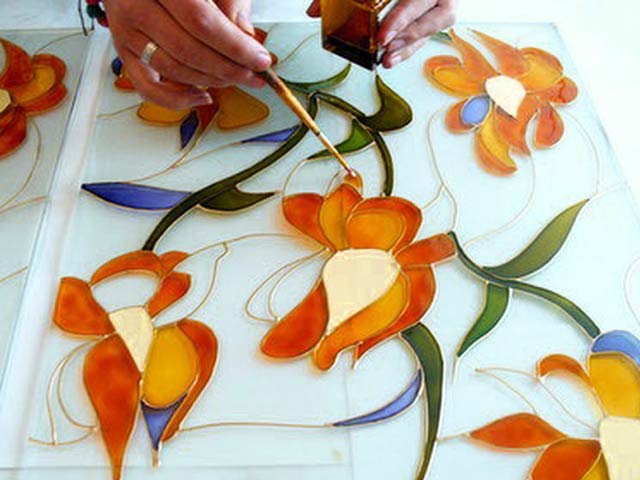
Stained glass painting
The blank for stained glass painting on glass must dry thoroughly, and only after that it can be taken to work again. When the drawing is completely ready and dried, the resulting panel is opened with varnish.
Filled stained glass
Drawing on glass, obtained in this way of application, is practically indistinguishable from a true stained glass window. But this will only be the case if an understanding of the intricacies of lighting the picture is also applied to skillful hands. Here, a specific refraction of rays is required, which a reflective substrate can provide. This explains why the technique is more often used to design mirror surfaces.
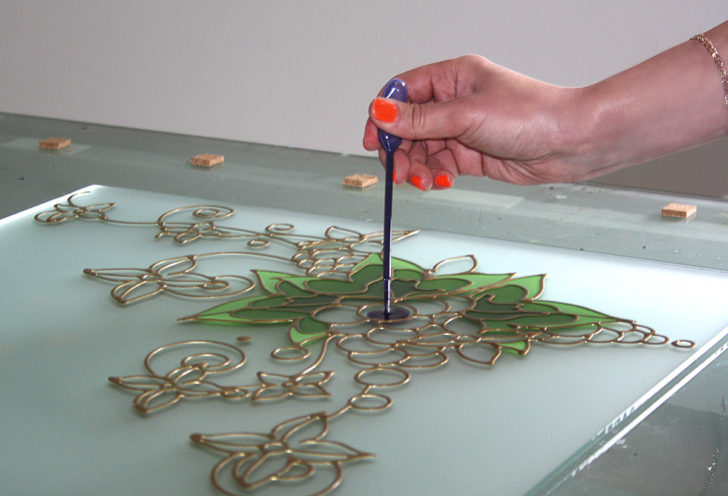
Filled stained-glass window with paints
With a well-made filling, stained glass paint forms a meniscus.Rays of different curvature of refraction passing through it make the stained-glass window play with color tints. Since diffraction also affects the borders of the border, it makes sense to make the latter dark and shiny. How it will look like painting on glass at this stage, look at the photo.
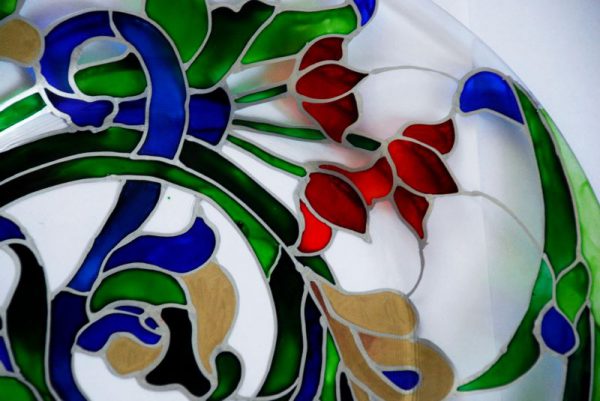
Filled stained glass painting
The stained-glass window is made according to the following algorithm. First of all, the assembly table is prepared. Its surface is covered with a white baize, coarse calico, flannel. A pattern stencil is placed on the fabric, which is covered with pre-skimmed glass. Now you need to fix the workpiece along the contour. This is done with PVA utensils. The glass is left to dry for a day. After that, the most difficult part of the procedure for painting glass with stained glass paints will begin - filling the formed cells. They are filled out one by one. Letting each poured batch dry.
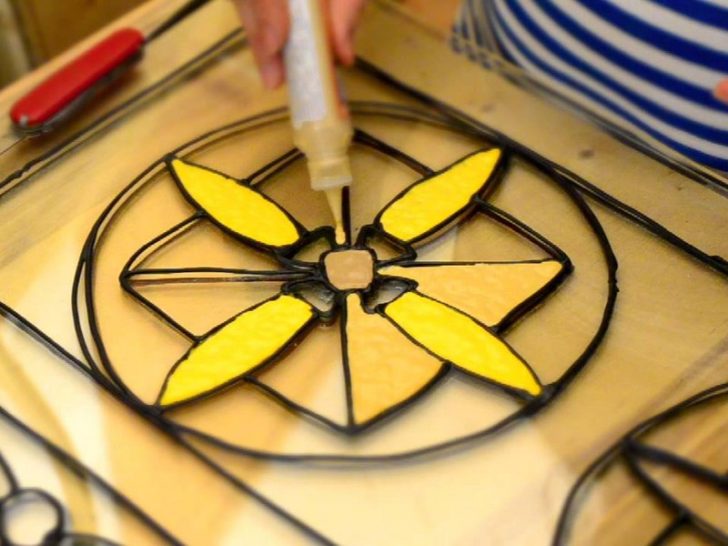
Filling cells with paint
If a leak occurs, it can be carefully removed by removing it with a razor blade. Bay last cell stained glass should be left for another day to dry. Then the resulting drawing on glass can be inserted into a frame or a metal frame, if it was a panel being prepared, and sent to the place allocated to it.
It is worth dwelling on the pouring technique when painting on glass with stained glass paints. The cells are painted over with a brush richly soaked in the composition or filled with a syringe, distributing it along the contour. At the same time, touching the curb is strictly prohibited. The paint should flow into the meniscus on its own, naturally. If its concentration came out liquidish, then after drying, the filling of the cell is repeated. It is absolutely impossible to pour or add paint to the center of it. If the painting on glass is done by hand and the process needs to be corrected, then to thicken the color spot, experts recommend making two bays in the frame at once - along the inner and outer contours. Provided that a “blamba” is formed in the center of the cell, then the light refraction will be broken and the stained glass painting will lose its meaning. If there are many such punctures, then the drawing on the glass will take on a sloppy look and you will not see the intended effect.
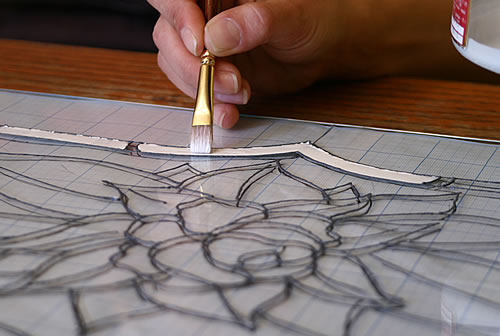
Filling an outline with a brush
marbling
Another interesting and quick way to paint glass. Special, different shades of paint on glass are alternately poured in a thin stream into the center of a container filled with heated water. The resulting colored circles are stretched into a pattern with a toothpick. The decorated object is dipped into the prepared font.
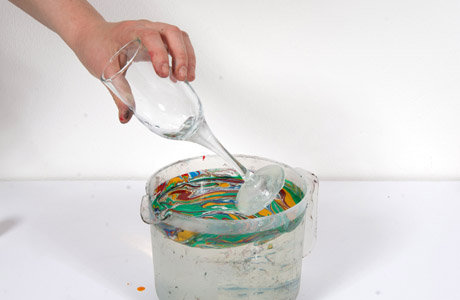
Glass marbling
After extraction, an abstract pattern will remain on its surface. The picture will very much resemble the structure of marble. The paint is allowed to dry and the pattern is fixed on the glass with varnish. Thus, you can decorate glasses, bottles, dishes, small shades, mini-panels.

Marbled stem decor
Conclusion
Do-it-yourself glass painting is an exciting activity! Techniques are not complicated and are accessible to everyone. You can decorate any glass with drawings, whether it is a large thing or a small trinket. It doesn’t matter at all whether you paint a plate or window glass, the main thing is that it turns out to be in the subject and sincerely!
Photo gallery - drawing on glass
Video
